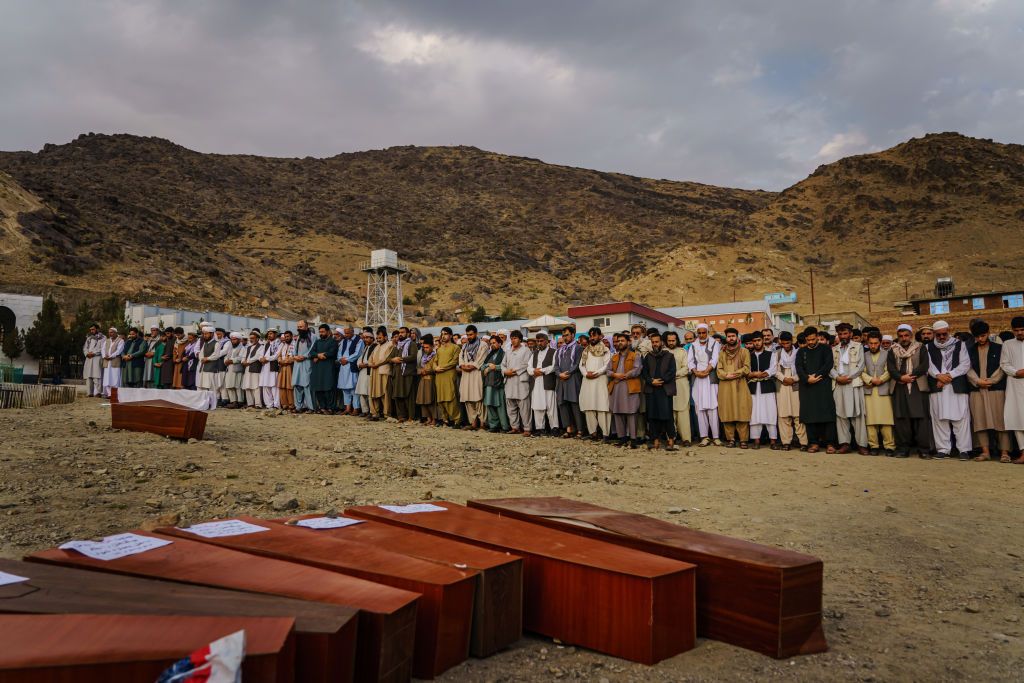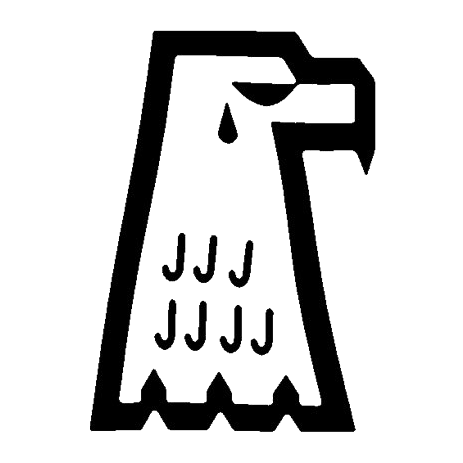On U.S. Intelligence’s Wiki, Anxiety About Legal Challenges To Drone Strikes
Who wants to read a never-before-published document leaked by Edward Snowden? It’s weird


Additional reporting by Laura Poitras
Edited by Sam Thielman
CIVIL-LIBERTARIAN AND HUMAN RIGHTS GROUPS’ legal efforts to challenge the CIA’s extrajudicial drone assassinations attracted significant attention from U.S. intelligence early in the 2010s, according to an entry on the U.S. intelligence agencies’ wiki leaked by NSA whistleblower Edward Snowden and published for the first time today.
“Manhunting, targeted killing, preemption, and the employment of remotely piloted aircraft raise challenging legal issues. Israel has practiced ‘precise prevention’ operations since the Munich massacre,” begins the entry “Targeted Killing: Policy, Legal and Ethical Controversy,” in an unclassified bullet. “Since the September 11, 2001, terrorist attacks, the United States has conducted ‘targeted killing’s against ‘enemy combatants,’ stating terrorist activates constitute legitimate targets for military action.”
While the entry on the wiki, Intellipedia, contains largely public information, it provides unique insight into how U.S. intelligence agencies viewed human rights and other civil-society organizations as a threat to its policy of assassinations. One of its only classified sections baselessly suggests that such legal and political efforts to restrain the drone strikes—by both civil-society organizations and United Nations entities—might be driven by deadlier associations and agendas.
“The effort may indicate a concerted effort by human rights organizations, activist international lawyers and opposition forces to undermine the use of remotely piloted vehicles, targeted killing, preemption and other direct action as elements of United States policy,” the document states.
“To date, no direct evidence of violent extremist sponsorship for these legal challenges has been detected.”

Pervading the document is an alarm at “growing international opposition” to the lethal operations, “in particular by civil rights activists, the United Nations Human Rights Council, and several international law professors.” Considering the power disparity between such entities and the CIA, NSA and Director of National Intelligence, it is a curious focus. The anonymous analyst or analysts who compiled the entry predict: “Those opposing targeted killing are increasing their organization and activities. If timing is more than coincidental, activists may coordinate their opposition efforts.”
The Office of The Director of National Intelligence did not respond to two requests for comment.
FOREVER WARS is publishing the document in full, minus some excisions for caution that do not affect the document’s narrative.
FOR THE 20TH ANNIVERSARY OF 9/11, the filmmaker and journalist Laura Poitras assembled a visual-art exhibition at St. George’s Church, near Ground Zero, called Parallel Construction. She asked me to join her in a dialogue that we held outside in Liberty Park. I brought my eldest daughter because I wanted her to meet one of the most heroic journalists of the age.
Laura is the reason we know the overwhelming majority of what we know about post-9/11 NSA surveillance, because Laura was the first journalist that Edward Snowden contacted. I later worked with Laura on the NSA story when I was at the Guardian. While she was preparing for Parallel Construction, she came across the Intellipedia entry and realized no one had ever published it. She gave me a copy.
THE INTELLIPEDIA ENTRY DOES NOT reveal any operations, covernames, unknown drone strikes or unknown details about acknowledged strikes. Most of it is even marked unclassified, as it discusses and cites public statements, press accounts and legal filings.
As well, the entry links to a plethora of sources, largely from news reports, with only a handful marked secret or top secret. Among those few were two headlines: “Inter-Services Intelligence Discusses Using Militant Group Leader to Discredit Human Rights Activist” and “Yemeni Red Cross Worker Killed by Yemeni Air Strike.” Unfortunately, none of the links work.
While not all of the “Targeted Killing” entry is paranoid—much of it is written in the bland style of a Wikipedia editor attempting journalistic even-handedness—it sometimes suggests U.S. impunity to employ drone strikes is a perishable commodity. That helps explain the document’s occasionally alarmist depiction of legal and political challenges to the strikes.
The entry begins by effectively warning that “targeted killing” might lack “any basis in international law.” “Even under the paradigm of hostilities,” the more permissive paradigm in international law, “no person can be lawfully liquidated without further considerations.” However anodyne a description of killing someone that is, the document goes on to say that the contemporaneous U.S. practice of dividing drone strikes into military strikes in Afghanistan and CIA strikes in Pakistan might fit “the very definition of ‘illegal combatants,’” according to unnamed “legal experts,” because CIA operators “are engaged in armed warfare but they do not wear uniforms and take shelter within civilian centers.”
But the analysts find a bit of tacit vindication from the Israeli Supreme Court. That court considered the 2002 assassination of Hamas leader Salah Shehada, which the IDF carried out by flattening an entire four-story building and killing seven children, as “unequivocally” not criminal. The entry recaps public defenses of “targeted killing” from then-current government officials like CIA Director Leon Panetta, Attorney General Eric Holder, State Department legal adviser Harold Koh and National Counterterrorism Center Michael Leiter. Criticism from the UN Human Rights Commission is noted, before being dismissed by “Western governments” as “politically-motivated and hypocritical.”
The ACLU’s 2010 effort to injunct Obama from killing Anwar al-Awlaki receives substantial attention in the Intellipedia entry. (As it does in the smash critical success REIGN OF TERROR: How The 9/11 Destabilized America And Produced Trump .) Although that lawsuit failed, the entry dwells on posthumous right-wing commentary defending al-Awlaki's killing. Conservative pundits seemed to believe that al-Awlaki's death has settled the matter, but the Intellipedia author(s) give special weight to “editorials … charging that the ACLU case is a subtle effort, establishing precedent to impose real-time non-government legal oversight of executive decisions regarding the conduct of warfare.”
That is a hysterical way for U.S. intelligence analysts to describe a lawsuit whose point was to ensure due process for an American citizen who had not been charged with a crime but whom the government assassinated. The relief sought would have come from a federal judge, making the imposition of “real time non-government legal oversight of executive decisions” an impossibility. Even if the Intellipedia editor was merely summarizing a bit of punditry, posting something that detached from reality to an intelligence-community wiki suggests that such a thing is acceptable on the forum. It wouldn’t be unprecedented within Security-State symposia: the FBI’s intranet has featured flagrant Islamophobic pseudo-scholarship.
Continuing in that vein is a case study in what the Intellipedia entry categorizes as “Lawfare.” The British human-rights legal group Reprieve attempted in 2011 to have CIA attorney John Rizzo arrested for his intimate involvement in drone strikes. Reprieve was attempting to get justice for CIA drone strikes on behalf of Pakistani survivors and relatives of the slain. Rizzo, a deceitful man who recently died, bragged about drone strikes, per reporter Tara McKelvey: “Rizzo can sometimes sound boastful. ‘How many law professors have signed off on a death warrant?’ he asks.”
This instance of “Lawfare” precedes the classified bullet speculating about a phantom “concerted effort by human rights organizations, activist international lawyers and opposition forces” to “undermine...direct action as elements of United States policy.” Reprieve knew it was fighting a lost cause—the wiki even quotes Reprieve founder Clive Stafford Smith saying they “will try for extradition and the U.S. will refuse,” even if they get a warrant from Interpol. To view such a legal effort so conspiratorially—“to date, no direct evidence of violent extremist sponsorship for these legal challenges has been detected”—immediately raises the question of why the intelligence agencies consider them dangerous at all.
“Lawfare is a silly term coined by those who would like to use Warfare to kill people, unhindered by irritations like human rights and humanitarian law,” said Stafford Smith, who is now a human-rights lawyer and director of the 3D Centre in Britain.
“It is offensive, and probably defamatory, to imply that I was working with ‘violent extremist’ elements. I have, to be sure, insisted that the rule of law should be applied to everyone, including many children in Waziristan. I have made what seems like a fairly modest argument that they should not be subjected to the death penalty without a trial, based on informants who are making up patent lies for money. It is a tragedy I have seen far too often.”
But Stafford Smith took vindication in the steep reduction in drone strikes in Pakistan following his legal gambit – something that might explain the Intellipedia entry’s fixation on it.
“While I would have wished him the fair trial that he was denying so many others, it was clear that John Rizzo was committing an international crime against Pakistan, along with all of those who were behind the drone killings in the territory of an ally. I don’t normally believe that deterrence prevents much crime, but I am glad to say our litigation did put a stop to it here,” he said. “There were at least 122 illegal U.S. drone strikes in Pakistan in 2010 and thanks to our litigation – handled with the Foundation for Fundamental Rights in Islamabad – that shrank to eight in 2017 and then none. Official estimates of the civilian casualties were a fantasy, way below the reality among the people I met, and the drone strikes hugely harmed the U.S. reputation in the region.”
A possible indication of what the intelligence agencies fear from such legal challenges comes from a section confusedly marked unclassified in its topline but “secret/no foreign” distribution in its subsequent text. That section highlights a ruling from the Mexican Supreme Court that “exposed Mexican military personnel to civilian prosecution for all human rights crimes” rather than military prosecution. Intellipedia cited press accounts suggesting the “outraged” military “threatens to reduce operations if subjected to civilian courts for alleged violations.”
It’s only one Intellipedia entry from nearly a decade ago. But it is as conspicuous as it is disturbing that the document views what, in the final analysis, is law—American, foreign, or international—as a terrordome for the CIA and the NSA.
RECENTLY, YAHOO REPORTED ON an often-thwarted Trump-era push within U.S. intelligence agencies to accelerate active measures against WikiLeaks. An aspect of that story FOREVER WARS highlighted concerned an eagerness within the intelligence community, including at the time of this Intellipedia entry, to redefine Assange’s acts as a publisher as acts of espionage. (WikiLeaks, organizationally, sure went on to blur that fucking line!)
It's hard to read the Intellipedia document in quite the same way after the Yahoo story as we might have before it. At the time of the Intellipedia entry, we know from previously published Snowden disclosures that U.S. intelligence had Assange on something it ominously called a “Manhunting Timeline” that involved pressuring allied governments to prosecute Assange for publishing secrets. While the Intellipedia entry doesn’t mention WikiLeaks, its placement of legal and political challenges to drone strikes on a continuum with warfare is of a piece with how U.S. intelligence can also view journalism on a continuum with espionage. Indeed, the Intellipedia entry beckons readers to click on “Main article: Manhunting,” and “manhunting” is the first word of the entry’s text. I asked the Office of the Director of National Intelligence about the relationship between this entry and the "Manhunting" one, but they didn't respond.
ONE OF THE MORE CURIOUS ASPECTS of the document is the fact that most of it is stamped “(U)” for unclassified, except for the giant TOP SECRET // SI // TK insignia atop it. On the face of it, “the classification marking makes no sense at all,” observed Steve Aftergood, an intelligence and classification expert at the Federation of American Scientists. “The contents are unclassified, not Top Secret, and they contain no communications intelligence (SI) or satellite-derived intelligence (TK). So what’s going on?”
His supposition is that the top-secret marking is for Intellipedia itself, blanketing everything it contains, regardless of categorizational awkwardness. “In other words, it’s an artifact of the IT system,” Aftergood surmised, “rather than anyone’s considered classification judgment.”

